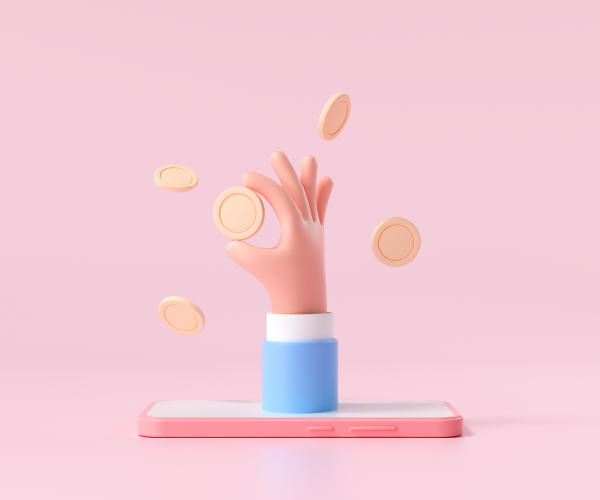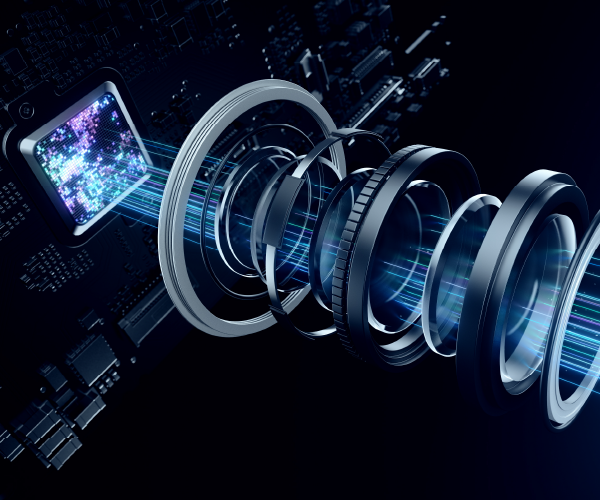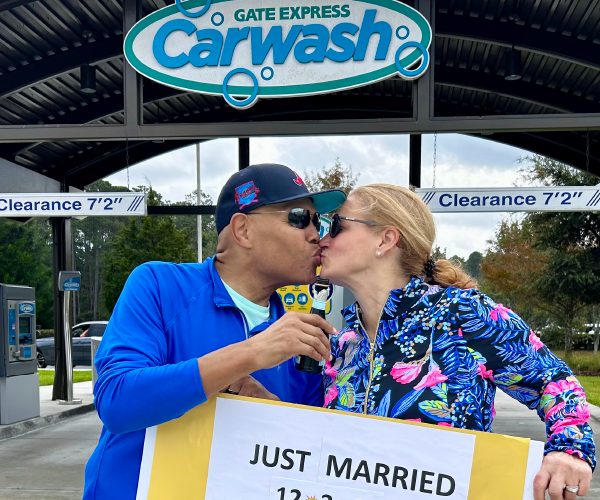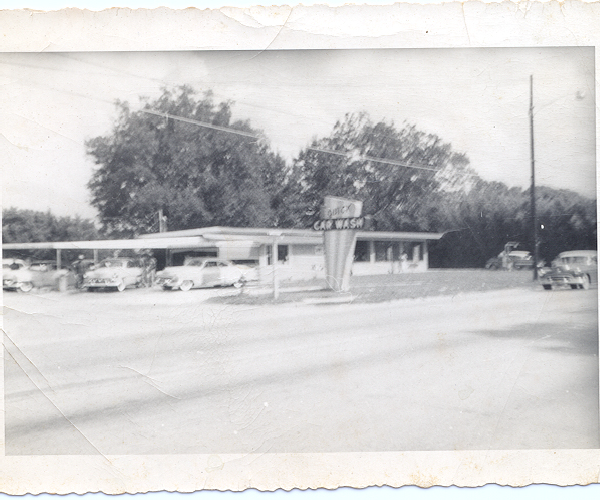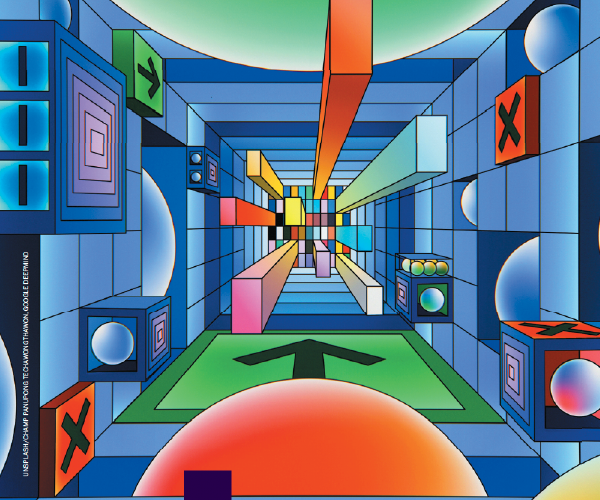
Stirring Up the Senses
June 30, 2023
8 minute ReadPart one of a four-part series on using the senses to influence customer experiences.
By Mary Lou Jay
What makes a person choose one car wash over another? While owners may focus on quality of service, convenience and cost effectiveness when developing marketing plans, they should also be considering the sensory experiences they are providing to customers. What people see, hear, touch, smell and even taste at a facility could make a big difference in determining whether they revisit it.
Researchers are still mapping the connections that link sensory inputs to the brain’s limbic system, which controls our behavioral and emotional responses. We do know, however, that the information our brains receive from the different senses can evoke memories and emotions that influence what we decide to buy.
“We often believe that we make decisions rationally based on facts, reason and logic. But in reality, we make most of our decisions subconsciously based on emotions, feelings and intuition,” said Dr. Terry Wu, founder of Neuromarketing Services. Research published by Harvard Business Review has shown that unconscious emotions and feelings actually drive about 95% of consumers' buying decisions.
Sensory experiences are part of this unconscious selection process. In one study, cited by Wu, a wine store played French music some days and German music others. When French music was playing, the store sold three times more French wine than German. When German music was in the background, shoppers bought three times more German wine than French. While the music obviously influenced buyers’ choices, it was an unconscious response; 90% of the shoppers said they weren’t even aware that music was playing.
Researchers from Spain’s IE University noted, “Consumer behavior can be influenced by sensory marketing to generate experiences at every stage of the buying process … that includes activation of desire, awareness of the product or service, assessment of the product or service in relation to other options, purchase, and post-purchase evaluation of use or consumption.
Over the next year, CAR WASH Magazine will look at the way people’s sensory experiences can affect their impressions of a car wash and their ultimate buying decisions. First up are two powerful influencers: sight and touch.
HOW VISION AND TOUCH IMPACT CUSTOMER EXPERIENCE
It’s not hard to identify the sense that people first use to assess your car wash; they will see it from the road long before any of the other senses come into play. The sense of touch can be equally, according to research posted at ScienceDaily.
The sense of touch is closely linked to vision. When people see something they are interested in, they like to touch it as well to gain a better understanding of it. Both vision and touch can evoke emotions and memories that impact people’s buying behaviors.
Customers visiting a car wash are conscious on one level of what they are seeing — the building’s shape, the site’s overall cleanliness, the signage colors, the tunnel lights and much more. But what they see influences them on an unconscious level as well.
Take color for example. Wu says that evolution played a role in making yellow the most visible color to human eyes. 50,000 years ago, hunter-gatherers looked for glimpses of yellow when foraging because it signaled ripe food (like bananas). That positive association lingers to this day, when yellow usually represents sunshine and positive feelings like happiness and energy. Red, another indicator of ripe food, is associated with excitement, strength and power.
Green and blue, on the other hand, are generally soothing, because on an unconscious level we connect them with nature’s green plants and trees, and with blue skies, lakes and other bodies of water.
Other visual details like the typefaces chosen for advertising and signage may also send signals to our unconscious brains. Wu notes that there’s a trend in the retail industry to change the capitalization of logos to match the preferences of target customers.
“If the majority of the customers you have are female, brands with lowercase letters look more friendly and less intimidating. When you capitalize everything, you are saying, ‘Pay attention to this.’ It appears more aggressive, more masculine,” he said.

VISUAL ELEMENTS SET THE TONE
Car washes are very conscious of how color, signage and other visual elements impact their customers’ first and long-term impressions.
Express Car Wash Concepts uses unique color palettes, fonts and building shapes to distinguish each of its five brands. Moo Moo Express Car Wash locations feature barn-like structures with red and white signage, while its Flying Ace Express facilities have curved airplane hangar roofs and red, yellow and sky-blue signs.
The buildings at the company’s new lux brand, Clean Express Auto Wash, are streamlined and modern looking, and feature clean green and blue signage that suggests a spa. The tunnel lighting is primarily blue and green, but the ceramic coating arch features a purple light, which communicates that this service is something special, as purple is often associated with royalty in Western cultures.
“We keep our signage as consistent as possible across all locations so that customers, particularly our Unlimited Wash Club members, can wash their vehicles at any location and have the same visual and overall wash experience,” said ICA member Beth Martin, the company’s vice president, marketing.
Rainforest Car Wash has shaped its brand around elements like rock walls that suggest mountains, waterfalls and a grand entry arch and animatronics that feature jungle animals. Easy-to-read fonts are used and bright primary colors, which the company employs in its tunnel lights, foams and arches to tell a color story, said Tara Baugher, VP of operations.
“It’s all cohesive, and it’s synergistic with the theming and adventure parts of our car wash,” Baugher said. “Our brand mission is to inspire a sense of adventure, family and fun, one clean car at a time.”
In October, the company transforms one of its sites into a haunted car wash that includes many memorable visual experiences: skeletons and gravestones in the exterior landscaping, seasonal animatronics like a headless horseman and witches, and workers in creepy clown costumes.
“We have such an opportunity with car washing to make it something cool and unexpected. People don’t think they’re going to see animatronics in the tunnel, or a giant rock with a waterfall … It can be so much more than a car wash; it’s an experience, a destination,” Baugher said.
Mint Eco Car Wash’s leaf logo visually announces what the brand stands for: a greener, more environmentally friendly approach to washing cars. There are no primary colors here. The Florida company’s blue-and-green signage, its bright, clean lobbies and the outdoor waiting areas with palm trees and Adirondack chairs all reinforce the eco message and help create the calm, soothing experience that the company wants to portray.
Mint Eco relies on some unique visuals to share its green message. “We have added an arch in our tunnels that tells people how much water they’re saving with every wash,” said Shannon Kessell, chief marketing officer. Signs in the lobby explain various green features like compostable coffee materials, low flush toilets and water bottle refill stations.
TOUCHING EXPERIENCES
Although people rely primarily on vision to learn about their environment, the sense of touch provides them with additional information. They may rub something to feel its texture, pick it up to gauge its weight or press its surface to test its hardness. Touching something can change both our perception of it and our relationship to it. According to research by JoAnn Peck and Susanne B. Shy posted by UCLA Anderson School of Management, when people get to touch an object, they begin to feel like they own it (perceived ownership). If they like what they feel, they place a higher value on it and may be willing to spend more for it.
The surfaces that people touch at a car wash will impact their impression of it. For example, Wu said that a car wash that wants to create a high-end experience should use soft-surface furniture in its waiting areas, which makes customers feel more relaxed. Hard surfaces are less inviting and make people more impatient.
Making opportunities for touch experiences in conjunction with visual ones can reinforce the messages that car washes want to convey. Clean Express Auto Wash doesn’t just tell customers that the closed cell foam they use in the wash tunnel is soft; they let them see the foam up close and touch samples of it. “We want to educate our customers and have them feel this product so they have confidence that we’re not going to harm their vehicles when they’re going through the tunnel,” Martin said.
Although car washes can’t offer customers many tactile opportunities as their vehicles go through the wash process, Rainforest Car Wash sometimes gives out coloring books and stuffed animal versions of its Petey the Parrot mascot that young visitors can hold during the tunnel trip. When customers reach the back lot, they can touch a Petey animatronic and take a selfie with it. At one location, people can throw coins into a waterfall pool, bringing touch, sight and sound into play.
CREATING GOOD IMPRESSIONS
Mint Eco has incorporated many opportunities for touch in its sales process. Instead of bombarding customers with menu signage, Mint Eco staff members personalize the experience by handing customers laminated menus of services, explaining the options listed there, and using tablets to complete the sales process.
If customers are undecided about getting a hand wax or clay bar service for their vehicle, staff members encourage them to feel their own car hood and then the hood of a car that has received the service. Experiencing the smooth, glossy surface using the sense of touch is the most effective way of demonstrating the benefits of a detail.
Mint Eco also consciously uses vision, touch and several other senses when it presents a newly-detailed car to a customer. “The delivery of the vehicle is one of the most important moments in our relationship with clients,” Kessell said. “We walk them through our outdoor lobby oasis and down a green carpet. At the end of that carpet the doors sit open, and with the sun shining on it, the vehicle just glows.” Staff then encourage the customers to go over the car carefully, feeling the exterior finish and the clean upholstery and smelling the fresh scent.
It's those kind of visual and touch experiences that provide customers with a visceral understanding of what it means to have a well-cleaned car. The sensory impressions create memories and positive associations that will make them want to return to that particular car wash.
“The car wash business is not a one-time deal; you want repeat customers who come back again and again, like they do at Starbucks,” Wu said. Providing them with opportunities to use their senses of vision and touch, as well as smell, sound and even taste, are essential in getting them to return.
“If you design the right experiences for them, they will come back. It’s how people remember you,” he said.


